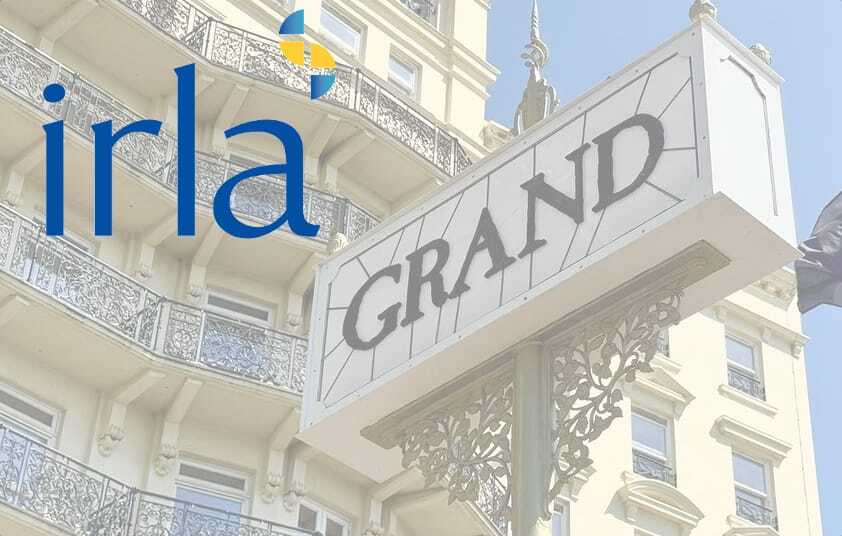The legacy and reinsurance market, once viewed as a niche or reactive segment of the insurance sector, has now become a central component of capital management strategies and long-term planning.
 That was the consistent theme emerging from this year’s IRLA Congress & Business Seminar, where industry leaders underscored the market’s growing sophistication, relevance, and capacity to provide scalable, forward-looking solutions.
That was the consistent theme emerging from this year’s IRLA Congress & Business Seminar, where industry leaders underscored the market’s growing sophistication, relevance, and capacity to provide scalable, forward-looking solutions.
Kevin Gill, Chairman of IRLA, introduced a briefing that reflected how much the sector has transformed.
No longer limited to run-off transactions or isolated loss portfolio transfers, the market now supports insurers with tailored approaches that span the balance sheet and enable strategic risk transfer without compromising operational control.
Executives including Nick Crossley, CEO of Enstar, Will Bridger, Group CEO of Compre, Luke Tanzer, CEO of RiverStone, Steve Ryland, Global Head of Legacy at Acrisure Re, Andrew Ward, Partner at PwC, Tom Booth, CEO of DARAG Group, Tom Dixon, Head of Legacy at Gallagher Re, and James Mounty, Global Practice Leader at Gallagher Re, shared observations on how legacy has evolved from a post-underwriting consideration to a proactive tool for managing capital, volatility, and long-term reserves.
A key point of discussion was the shift among legacy providers toward broader, partnership-based models. Organisations that once offered piecemeal solutions are now delivering integrated, enterprise-wide strategies. This transformation reflects not just financial innovation but a growing confidence in handling more complex and larger-scale exposures.
Nick Crossley described how Enstar has repositioned itself to deliver across the full breadth of insurers’ needs. With a more expansive risk appetite and comfort in underwriting larger portfolios and bespoke structures, Enstar is now helping clients manage reserve risk in ways that support growth and improve stability. He also pointed to the company’s enhanced financial strength, noting a recent upgrade in its credit rating as an important validation of its strategy.
Will Bridger emphasised how deeply embedded legacy thinking has become within insurance operations. Where once these tools were seen as specialist, now almost every insurer considers capital release options as part of their strategic planning.
He highlighted how the shift in broker involvement has pushed legacy further into the mainstream and explained that, within Compre, investment in softer skills and leadership development has helped staff navigate this changing landscape more effectively.
Steve Ryland, offering a broker’s perspective from Acrisure, pointed out that tools such as retrospective reinsurance and cat bonds are increasingly used to manage capital efficiently while allowing insurers to retain economic interest.
In the US non-life market, where thousands of carriers operate, Ryland noted there remains significant room for growth, as understanding of legacy structures is still limited outside of more advanced markets like Lloyd’s. He also remarked that today’s deals require far more robust data analytics and reconciliation work than in years past.
At RiverStone, Luke Tanzer discussed a significant multi-year upgrade of the company’s systems—designed to underpin its operations for the next two decades.
The firm has also deployed new governance, HR, and training frameworks, supported by key senior hires. Tanzer stressed the importance of internal communication and staff engagement, noting that talent and technology are the two most important assets for any legacy provider.
Andrew Ward observed that the market is now more grounded than ever before, with a wider array of options available to insurers of all sizes.
He highlighted how some companies are using legacy structures as part of IPO preparations or group-wide restructurings, and noted the increasing role of AI tools in streamlining claims processes.
Ward also pointed to the shift in demographics, with more young professionals entering the sector and growing momentum on diversity and inclusion.
From a continental European angle, Tom Booth reflected on how legacy strategies in that region have traditionally focused on discontinued portfolios rather than capital relief. But that may be changing, with early signs suggesting that some large groups are beginning to view the legacy market more strategically.
Tom Dixon of Gallagher Re reinforced the growing complexity and flexibility in today’s deals. He highlighted the trend of clients retaining functions like asset or claims management, where appropriate, and stressed the need for solutions to be fully tailored to each client’s objectives.
James Mounty, Gallagher Re, highlighted the firm’s commitment to delivering these tailored solutions that address the unique challenges faced by insurers.
He emphasised the importance of understanding clients’ specific needs and developing strategies that optimise capital efficiency and risk management.
Gallagher Re’s Global Solutions team continues to drive activity in this space, with Dixon playing a key role in positioning the firm at the centre of these evolving conversations.
Collectively, the briefing made it clear that the legacy and reinsurance sector is no longer peripheral. It is an established and dynamic part of the insurance ecosystem—driven by stronger financial backing, better systems, deeper talent pools, and more sophisticated client demand.
As insurers face heightened capital pressures and regulatory scrutiny, the tools and structures offered by today’s legacy market are likely to become even more essential.
The post IRLA Congress: Legacy market shifts to proactive capital management and risk solutions appeared first on ReinsuranceNe.ws.
